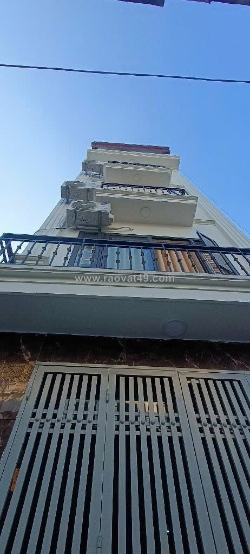Rising wedge and falling wedge trading with az broker
Ngày đăng: 10/8/2025 10:59:44 AM - Dịch vụ - Toàn Quốc - 4Chi tiết [Mã tin: 6260193] - Cập nhật: 26 phút trước
In the ever-evolving world of financial trading, understanding chart patterns is one of the key elements that separate experienced traders from beginners. Among the most important continuation and reversal patterns are the Rising Wedge and Falling Wedge formations. These patterns provide traders with valuable insights into potential market shifts, helping them make better entry and exit decisions.
In today’s article, AZ Broker will walk you through the meaning, characteristics, and trading strategies for both wedge patterns, offering practical insights for traders who want to sharpen their technical analysis skills. If you’re passionate about improving your trading knowledge, don’t forget to explore the Learn Trading section on the AZ Broker website, where you can find more advanced guides on technical indicators and price action strategies.
Rising Wedge Pattern Explained
The Rising Wedge is typically viewed as a bearish reversal pattern, although it can sometimes appear as a continuation formation during a downtrend. This pattern is characterized by two converging trendlines sloping upward — with the upper line connecting higher highs and the lower line connecting higher lows. As price continues to move within this narrowing channel, the upward momentum starts to weaken, signaling that sellers may soon take control.
One of the key features of this pattern is declining volume. As the wedge narrows, the volume usually fades, reflecting reduced buying interest. When the price finally breaks below the lower trendline, it often triggers a sharp downside move.
To identify a valid Rising Wedge, traders often look for:
- At least two higher highs and two higher lows.
- A narrowing structure, showing loss of momentum.
- A decisive breakout with strong volume confirmation.
Trading strategy:
Traders typically wait for a confirmed breakout below the support line before entering a short position. A common target is the lowest point of the wedge, while a protective stop is usually placed just above the most recent swing high.
To refine this setup, traders can combine wedge analysis with a momentum indicator like Parabolic SAR to validate potential reversals or entry signals. You can learn more about this indicator and how to apply it effectively at: https://azbroker.net/learn-trading/parabolic-sar/
Once you’ve mastered how to spot a Rising Wedge, it’s time to discover its bullish counterpart — the Falling Wedge — which offers a mirror image of market sentiment.
Falling Wedge Pattern in Trading
The Falling Wedge is considered one of the most powerful bullish reversal patterns in technical analysis. It occurs when the price forms lower highs and lower lows, but the two trendlines begin to converge, signaling a potential slowdown in bearish momentum. This pattern typically appears near the end of a downtrend, serving as a precursor to a possible bullish reversal.
Volume plays a crucial role here as well. As the wedge contracts, volume tends to decrease, followed by a surge in trading activity when the price breaks above the resistance line — confirming a shift from sellers to buyers.
Key characteristics of the Falling Wedge include:
- Two downward-sloping trendlines that converge.
- Diminishing volume within the wedge.
- A breakout above the upper resistance line with increased volume.
Trading strategy:
When a bullish breakout occurs, traders often enter long positions once the price closes above the resistance line. Profit targets are generally set at the beginning of the wedge, and stops can be placed just below the breakout candle or the most recent swing low.
For better confirmation, some traders use the Ichimoku Kinko Hyo indicator to gauge overall market sentiment and identify potential trend reversals before entering trades. Learn how to incorporate this powerful system into your wedge trading at: https://azbroker.net/learn-trading/ichimoku-kinko-hyo/
Understanding both wedge patterns not only enhances your ability to forecast price reversals but also allows you to trade confidently across different market conditions. But before you dive into live trading, let’s discuss how to combine wedge analysis with broader market context.
How to Apply Wedge Patterns in Real Trading
Recognizing a pattern on the chart is only the first step — applying it effectively in real market scenarios requires discipline, timing, and confluence with other signals. Both Rising and Falling Wedge patterns work best when combined with indicators like moving averages, support/resistance zones, or oscillators that confirm momentum changes.
Here are some practical tips for traders:
- Always confirm breakouts with volume or momentum indicators.
- Avoid entering trades before a breakout; false signals are common in wedges.
- Backtest your wedge strategy using historical charts to improve accuracy.
- Manage risk by setting tight stop-losses, especially during volatile sessions.
Moreover, traders should pay close attention to higher timeframes such as the 4-hour or daily chart. Wedge formations on larger timeframes tend to produce stronger and more reliable outcomes compared to those found in shorter periods.
At AZ Broker, our mission is to empower traders with the knowledge and tools needed to navigate market complexities with confidence. We believe that understanding chart patterns like wedges helps build a solid foundation for long-term trading success.
As you master these techniques, you can also explore other advanced concepts in the Learn Trading category on AZ Broker to expand your technical skill set and refine your trading strategy.
The Rising Wedge and Falling Wedge are more than just chart formations — they represent the underlying tension between buyers and sellers, offering traders a window into potential market reversals. When combined with confirmation tools like Parabolic SAR or Ichimoku, these patterns can become part of a powerful trading strategy that balances precision with risk management.
Tin liên quan cùng chuyên mục Dịch vụ
 1
1Dịch vụ sửa chữa máy hủy giấy
Cập nhật: vài giây trước- 2
Siêu phẩm tại phụng châu-chương mỹ d/t:50m
Cập nhật: vài giây trước - 0
Cách làm sữa chua ngon tại nhà cùng loan vu foods – bí quyết mềm mịn, thơm ngon chuẩn vị
Cập nhật: vài giây trước - 2
Ngộp bank bán gấp nhà gần khu cnc, hiệp phú, thủ đức 65m2, ngang 4.5m chỉ 3tỷ nhỉnh shr ở ngay
Cập nhật: vài giây trước  1
1Cần bán nhà mặt phố hàm long, hoàn kiếm, 176m 9 tầng², 150 tỷ, sổ đỏ
Cập nhật: vài giây trước 1
1Bán toà nhà chung cư mini 176 trương định - 50m 5 tầng 9 phòng full nội thất
Cập nhật: vài giây trước- 2
Bán nhà gần phạm văn đồng, hiệp bình chánh, 70m2, 4t, hẻm xe tải chỉ nhỉnh 6 tỷ sẵn dòng tiền
Cập nhật: 1 phút trước - 2
Bán nhà kha vạn cân linh chiểu, thủ đức, 75m2, ngang 5m, chỉ nhỉnh 4 tỷ, giá rẻ bất ngờ
Cập nhật: 1 phút trước  1
1Bán nhà 3 tầng, 34m², 3pn, 3wc, vĩnh hưng - hoàng mai - 2.5 tỷ
Cập nhật: 1 phút trước- 2
Ngộp bank giảm 500tr bán gấp nhà linh xuân thủ đức 60m2, hxh, 3t bao đầu tư
Cập nhật: 1 phút trước  1
1Bán nhà 22m², 3 tầng, 2pn, lĩnh nam, hoàng mai, 1.95 tỷ
Cập nhật: 1 phút trước 2
2Nhà vị trí đẹp - giá tốt - bán gấp căn noxh xã minh hưng , chơn thành bình
Cập nhật: 1 phút trước- 2
Giá chỉ vài trăm triệu sở hữu lô đất tại thanh bình-chương mỹ
Cập nhật: 1 phút trước  1
1Bán nhà lĩnh nam 50m 5 tầng 5 phòng nhà mới giá 8.3 tỷ tặng nội thất
Cập nhật: 1 phút trước 1
1Bán đất thổ cư hẻm xe hơi tránh 55m2_4x13m gần vạn phúc city quốc lộ 13 hiệp
Cập nhật: 2 phút trước- 2
Bán nhà đường số 8 linh xuân thủ đức 98m2_7x14m chỉ nhỉnh 3 tỷ tặng nhà c4 ở ngay
Cập nhật: 2 phút trước  1
1Bán nhà 37m², 5 tầng, 8 phòng full nội thất, 6.3 tỷ, trương định sổ riêng
Cập nhật: 2 phút trước 2
2Căn hộ trần quý kiên cầu giấy 60m-2 ngủ giá 4,950 tỷ
Cập nhật: 2 phút trước- 2
Ngộp bank giảm sốc 2 tỷ bán nhà hẻm xe tải lô góc 102m2_5*20 3t gần ubnd trường thọ chỉ 7,9 tỷ giá
Cập nhật: 2 phút trước - 2
Bán nhà hẻm xe hơi_4 tầng_ gần chợ hiệp bình_hiệp bình chánh_giá chỉ 5,85 tỷ
Cập nhật: 2 phút trước - 2
Ngộp bank mặt tiền kinh doanh, lê văn việt thủ đức gần 60m2, hxh chỉ 4.1 tỷ quá rẻ
Cập nhật: 2 phút trước - 2
Mặt tiền kinh doanh linh chiểu, thủ đức, 99m2, 4t, tặng 10 phòng trọ, bao đầu tư
Cập nhật: 3 phút trước - 2
Bán nhà gần đặng văn bi trường thọ 45m2, 2 tầng đúc, hẻm xe tải chỉ nhinh 3 tỷ
Cập nhật: 3 phút trước  2
2Đất đẹp–giá đầu tư -cần bán lô góc 2 mặt tiền bê tông hẻm 329 nguyễn hội,
Cập nhật: 3 phút trước 1
1Sx66 male enhancement belgium bilan : ce supplément a changé votre vie
Cập nhật: 3 phút trước 2
2Căn hộ view đẹp- giá tốt cần bán nhanh căn hộ cao cấp toà n01t1 ngoại giao
Cập nhật: 3 phút trước- 2
Siêu phẩm giá đầu tư 2ty430 hợp đồng-chương mỹ d/t:79,2m
Cập nhật: 3 phút trước - 2
Siêu phẩm giá đầu tư giá rẻ tại đông phương yên-chương mỹ d/t:95,2m
Cập nhật: 3 phút trước - 2
Bán gấp nhà hẻm xe tải gần phạm văn đồng hiệp bình phước 84m2 4t 4pn chỉ nhỉnh 8 tỷ hiếm có
Cập nhật: 3 phút trước - 2
Bán nhà mặt tiền gần tô ngọc vân, linh đông 65m2 chỉ 4 tỷ nhỉnh, cần bán gấp
Cập nhật: 3 phút trước  1
1Nam dư lĩnh nam nhà mới ngõ thông ô tô đỗ cửa vào nhà 32m 5 tầng 6.5 tỷ
Cập nhật: 3 phút trước 1
1Bán nhà vĩnh hưng, hoàng mai, 36m², 2 tầng, 2 ngủ. 2.68 tỷ
Cập nhật: 4 phút trước- 2
Bán nhà hẻm xe hơi gần chợ xuân hiệp linh xuân 90m2_5*m 3 tầng 3pn chỉ 4.xtỷ siêu tiện ích
Cập nhật: 4 phút trước  1
1Bán biệt thự đẳng cấp, 1 hầm, 4 nổi, 1m, nội thất xa hoa, vỉa hè rộng, 48 tỷ
Cập nhật: 4 phút trước- 2
Bán nhà lê đức thọ, gần hồ trí đức, 34m, 5t, nhỉnh 5 tỷ, mới, đẹp, ở ngay
Cập nhật: 4 phút trước - 2
Bán nhà đại linh, 81m, ô tô tránh, kd, nhỉnh 14 tỷ
Cập nhật: 4 phút trước - 2
Bán căn hộ tt địa chất ngõ 1150 đường láng, 50m, lô góc, full nội thất, nhà đẹp ở ngay giá 2 tỷ 6
Cập nhật: 4 phút trước - 2
Bán liền kề vân canh hud, 100m, 4.5t, ở sướng, kd tốt, 13.3 tỷ
Cập nhật: 4 phút trước - 2
Bán nhà đống đa, cục bv lăng, 5t, 3n, ô tô tránh, nhà mới đẹp, hơn 7 tỷ
Cập nhật: 4 phút trước - 2
Bán đất tặng nhà mỹ đình, mặt chợ, ô tô tránh, kd đỉnh, 80m, giá nhỉnh 17 tỷ
Cập nhật: 4 phút trước  1
1Bán nhà dòng tiền đình thôn, ô tô tránh, 130m, 10t, doanh thu 2 tỷ/năm, nhỉnh
Cập nhật: 4 phút trước- 2
Căn hộ cc mỹ đình, 93m, lô góc, tầng trung, 3n, 2wc, 3 tỷ 99, nhà đẹp ở ngay
Cập nhật: 4 phút trước  1
1Siêu biệt thự an khánh, hàng xóm tđ bảo sơn, lô góc 3 thoáng, 245m, 5t, có hầm,
Cập nhật: 4 phút trước 1
1Bán nhà 45m², 5 tầng, 5pn, định công hạ, hoàng mai, 6.3 tỷ, sổ đỏ
Cập nhật: 4 phút trước- 2
Mỹ đình-đình thôn, 85m, lô góc 8t, tm, 21p khép kín, full nt, chỉ 19 tỷ
Cập nhật: 4 phút trước - 2
Bán chung cư mễ trì hạ, tầng trung, view đẹp, 65m, 2n nhà đẹp ở ngay, nhỉnh 3 tỷ
Cập nhật: 4 phút trước - 2
Bán nhà gần gigamall_hiệp bình chánh_thủ đức_56m2_giá chỉ nhỉnh 2 tỷ
Cập nhật: 4 phút trước  1
1Cho thuê nhà liền kề nam từ liêm, 80m, 5t, kinh doanh, vp, ở giá 25 triệu
Cập nhật: 4 phút trước 1
1Bán nhà cầu giấy, hoàng quốc việt, ô tô, kd, 65m, 4t, mt 6m, nhỉnh 19 tỷ
Cập nhật: 4 phút trước- 2
Bán đất tặng nhà 2t đỗ đức dục, ô tô, kd, ngõ thông, 41m, nhỉnh 7 tỷ
Cập nhật: 4 phút trước




















